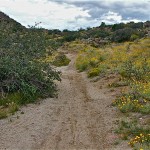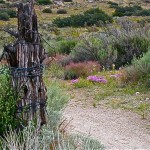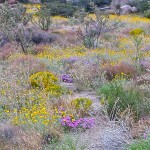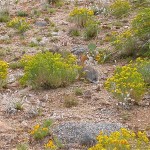My sister in Colorado’s San Luis Valley recently brought me an old, old book with cover and publication pages missing. Based on historic event references, the book appears to have been written around 1911-1912 for the Santa Fe Railroad promoting passenger travel to the southwest. This fits interestingly with Ken Burns’ recent series on PBS on how the railroads used the National Parks to entice people to travel westward. Two early paragraphs stuck out for sharing in the context of this blog.
On page 20, the author riding the train has just come out of the half-mile Raton Pass tunnel from Colorado into New Mexico. “The landscape is oriental in aspect and flushed with color. Nowhere else can you find sky of deeper blue, sunlight more dazzling, shadows more intense, clouds more luminously white, or stars that throb with redder fire. Here the pure rarified air that is associated in the mind with the arduous mountain climbing is the only air known – dry, cool and gently stimulating. Through it, as through a crystal, the rich red of the soil, the rich green of vegetation, and the varied tints of the rocks gleam always freshly on the sight.”
And just a bit further along, on page 22, “You feel that this place has always worn much the same aspect that it wears today. Parcel of the arid region, it sleeps only for thirst. Slake that, and it becomes a garden of paradise as by a magic word. The present generation has proved it true in a hundred localities, where the proximity of rivers or mountain streams has made irrigation practicable.”
This is what the Sandia foothils looked like in August 2004 after some perfect thirst-slaking rain; for the previous 3 and past 5 years these same hills have been parcels of the arid region — can you pick out the rabbit in the last photo?




